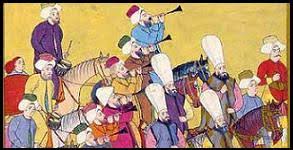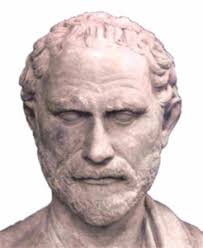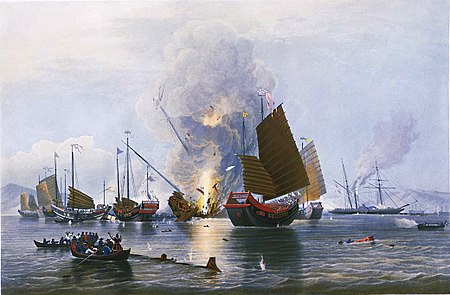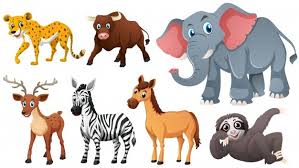Copyright@shravancharitymission

The Period of the Gunpowder Empires is also known as the Era of the Islamic Gunpowders. It refers to the epoch of the Ottoman, Safavid and Mughal empires from the 16th to the 18th century. The three empires were among the strongest and most stable out of the early modern period, leading to expansion and greater patronage of culture, while their political and legal institutions were consolidated with an increasing degree of centralisation. They underwent a significant increase in income and population and a sustained pace of technological innovation. These empires were spread from the Eastern Europe and North Africa in the west, to between today’s modern Bangladesh and Myanmar in the east.
They were Islamic, and had, considerable military and economic success. Vast amount of territories were conquered by the Islamic Gunpowder Empires, with the use and development of the newly invented firearms, especially cannon and small arms, in the course of imperial construction. Unlike in Europe, the introduction of gunpowder weapons prompted changes well beyond military organization. The Mughals, based in the Indian subcontinent, are recognised for their lavish architecture, while the Safavids created an efficient and modern state administration for Iran, and sponsored major developments in the fine arts, and the sultan of the Constantinople-based Ottoman caliphate—an Islamic state, also known as the Caesar of Rome, was the Custodian of the two Holy Mosques, and thus head of the Islamic world. Their powers, wealth, architecture, and various contributions significantly influenced the course of Asian history.
The Period of the Gunpowder Empires refers to the epoch of the Ottoman, in present Modern Turkish, was a state that controlled much of Southeastern Europe, Western Asia, and Northern Africa between the 14th and early 20th centuries. In addition you had the Safavid a Persian dynasty, romanized was one of the most significant ruling dynasties of Iran, from 1501 to 1736. The Safavid dynasty had its origin in the Safavid order of Sufism, which was established, in the city of, Ardabil in the Iranian Azerbaijan region. It was an Iranian dynasty of Kurdish origin, but during their rule they intermarried with Turkoman, Georgian, Circassian (Sunni Muslim people of the north-western Caucasus– between the Caspian Sea and the Black Sea in Caucasia—the white skinned Europeans), and Pontic Greek who are dignitaries that lived on the southern coast of Black Sea. From their base in Ardabil, the Safavids established control over parts of Greater Iran and reasserted the Iranian identity of the region, thus becoming the first native dynasty since the Sasanian Empire, officially known as the Empire of Iranians to establish a national state officially known as Iran.
The Ottoman, Safa-vid and Mughal empires from the 16th century to the 18th century were the most muscular empires and amongst the most brawny.
But how did this term Gunpowder Empire come into play. Well, it’s a Hodgson-McNeill concept. The phrase Gunpowder Empire was coined by Marshall G.S. Hodgson and his colleague William H. McNeill at the University of Chicago. Hodgson used the phrase in the title of Book 5 (“The Second Flowering: The Empires of Gunpowder Times”) of his highly influential three-volume work, The Venture of Islam (1974). Hodgson saw gunpowder weapons as the key to the “military patronage or military centered states of the Later Middle Period” which replaced the unstable, geographically limited, confederations of Turkic clans that prevailed in post-Mongol times. Hodgson defined a “military patronage state” as one having three characteristics:
First, a legitimization of, independent dynastic law. Second, the conception of the whole state as a single military force. Third, the attempt to explain all economic and high cultural resources as appanages or grants of the chief military families.
Such states grew “out of Mongol notions of greatness,” but such notions could mature fully and create stable bureaucratic empires only after gunpowder weapons and their specialized technology attained a primary place in military life of the state.
McNeill argued that whenever such states “were able to monopolize the new artillery, central authorities were able to unite larger territories into new, or consolidate new empires.” So, monopolization was the key. Although Europe pioneered the development of new artillery in the fifteenth century, no state monopolized it. Gun-casting know-how had been concentrated in the Low Countries near the mouths of the Scheldt and Rhine rivers in Europe. France and the Habsburgs, generally the rulers of Germany, Austria and Spain divided those territories among themselves, resulting in an arms standoff. By contrast, such monopolies allowed states to create militarized empires in Western Asia, Russia, and India, and “in a considerably, modified fashion” in China, Korea, and Japan.
More recently, the Hodgson-McNeill Gunpowder-Empire hypothesis has been termed into disfavour, as it offers neither “adequate nor accurate” explanation, although the term remains in use.
Reasons other than or in addition to military technology have been offered for the nearly simultaneous rise of three centralized military empires in contiguous areas dominated by decentralized Turkic tribes. One explanation, called “Confessionalization” by historians of fifteenth century Europe, invokes examination of how the relation of church and state “mediated through confessional statements and church ordinances” led to the origins of absolutist polities.
The first of the three empires to acquire gunpowder weapons was the Ottoman Empire. By the 14th century, the Ottomans had adopted gunpowder artillery. The adoption of the gunpowder weapons by the Ottomans was so rapid that they preceded both their European and Middle Eastern adversaries in establishing centralized and permanent troops specialized in the manufacturing and handling of firearms. But it was their use of artillery that shocked their adversaries and impelled the other two Islamic empires to accelerate their weapons programs. The Ottomans had artillery at least by the reign of Bayezid the Ottoman Sultan, and these were used by them in the sieges of Constantinople in 1399 and 1402. They finally proved their worth as siege engines in the successful siege of Salonica in the Ottoman kingdom in 1430. The Ottomans employed Middle-Eastern as well as European foundries to cast their cannons, and by the siege of Constanti-nople in 1453, they had large enough cannons to batter the walls of any city, to the surprise of the defenders.
The Ottoman military’s regularized use of firearms proceeded ahead of the pace of their European counterparts. The Janissaries (Ottoman Sultan’s household troops) had been an infantry bodyguard using bows and arrows. During the rule of Sultan Mehmed II they were drilled with firearms and became “perhaps the first standing infantry force equipped with firearms in the world.” The Janissaries are thus considered the first modern standing armies. The combination of artillery and Janissary firepower proved decisive at Battle of Varna, eastern Bulgaria in 1444 against a force of Crusaders, Baskent in 1473 against the Aq Qoyunlu, (a Sunni Turkoman Tribal) and Mohacs in 1526 against Hungary. But the battle which convinced the Safavids and the Mughals of the efficacy of the gunpowder was Chaldiran in 1514. A victory of Ottoman over Sadavid.
The musket gun later appeared in the Ottoman Empire by 1465. Damascus steel was later used in the production of firearms such as the musket from the 16th century. At the Battle of Mohacs in 1526, the Janissaries equipped with 2000 tüfenks (usually translated as musket) “formed nine consecutive rows and they fired their weapons row by row,” in a “kneeling or standing position without the need for additional support or rest.” The Chinese later adopted the Ottoman kneeling position for firing. In 1598, Chinese writer Zhao Shizhen described Turkish muskets as being superior to European muskets.
The Dardanelles Gun or the great Turkish canon was designed and cast in bronze in 1464 by one Munir Ali. The Dardanelles Gun was still present for duty more than 340 years later in 1807, when a Royal Navy force appeared and commenced the Dardanelles Operation. Turkish forces loaded the ancient relics with propellant and Projectiles, then fired them at the British ships. The British squadron suffered 28 casualties from this bombardment.
It’s a long topic. I’ve just given you a flavour.
By Kamlesh Tripathi
*
https://kamleshsujata.wordpress.com
*
Share it if you like it
*
Shravan Charity Mission is an NGO that works for poor children suffering from life threatening diseases especially cancer. Our posts are meant for our readers that includes both children and adults and it has a huge variety in terms of content. We also accept donations for our mission. Should you wish to donate for the cause. The bank details are given below:
NAME OF ACCOUNT: SHRAVAN CHARITY MISSION
Account no: 680510110004635 (BANK OF INDIA)
IFSC code: BKID0006805
*
Our publications
GLOOM BEHIND THE SMILE
(The book is about a young cancer patient. Now archived in 8 prestigious libraries of the US that includes Harvard College Library; Harvard University Library; Library of Congress; University of Washington, Seattle; University of Minnesota, Minneapolis; Yale University, New Haven; University of Chicago; University of North Carolina, at Chapel Hill University Libraries. It can also be accessed in MIT through Worldcat.org. Besides, it is also available for reading in libraries and archives of Canada, Cancer Aid and Research Foundation Mumbai and Jaipuria Institute of Management, Noida, India)
ONE TO TANGO … RIA’S ODYSSEY
(Is a book on ‘singlehood’ about a Delhi girl now archived in Connemara Library, Chennai and Delhi Public Library, GOI, Ministry of Culture, Delhi)
AADAB LUCKNOW … FOND MEMORIES
(Is a fiction written around the great city of Nawabs—Lucknow. It describes Lucknow in great detail and also talks about its Hindu-Muslim amity. That happens to be the undying characteristics of Lucknow. The book was launched in Lucknow International Literary Festival of 2014. It is included for reading in Askews and Holts Library Services, Lancashire, U.K.)
REFRACTIONS … FROM THE PRISM OF GOD
(Co-published by Cankids–Kidscan, a pan India NGO and Shravan Charity Mission, that works for Child cancer in India. The book is endorsed by Ms Preetha Reddy, MD Apollo Hospitals Group. It was launched in Lucknow International Literary Festival 2016)
TYPICAL TALE OF AN INDIAN SALESMAN
(Is a story of an Indian salesman who is, humbly qualified. Yet he fights his ways through unceasing uncertainties to reach the top. A good read not only for salesmen. The book was launched on 10th February, 2018 in Gorakhpur Lit-Fest. Now available in Amazon, Flipkart and Onlinegatha)
RHYTHM … in poems
(Published in January 2019. The book contains 50 poems. The poems describe our day to day life. The book is available in Amazon, Flipkart and Onlinegatha)
MIRAGE
(Published in February 2020. The book is a collection of eight short stories. It is available in Amazon, Flipkart and Notion Press)
Short stories and Articles published in Bhavan’s Journal: Reality and Perception 15.10.19; Sending the Wrong Message 31.5.20; Eagle versus Scholars June 15 & 20 2020; Indica 15.8.20; The Story of King Chitraketu August 31 2020; Breaking Through the Chakravyuh September 30 2020.
(ALL THE ABOVE TITLES ARE AVAILABLE FOR SALE IN AMAZON, FLIPKART AND OTHER ONLINE STORES OR YOU COULD EVEN WRITE TO US FOR A COPY)
*****





